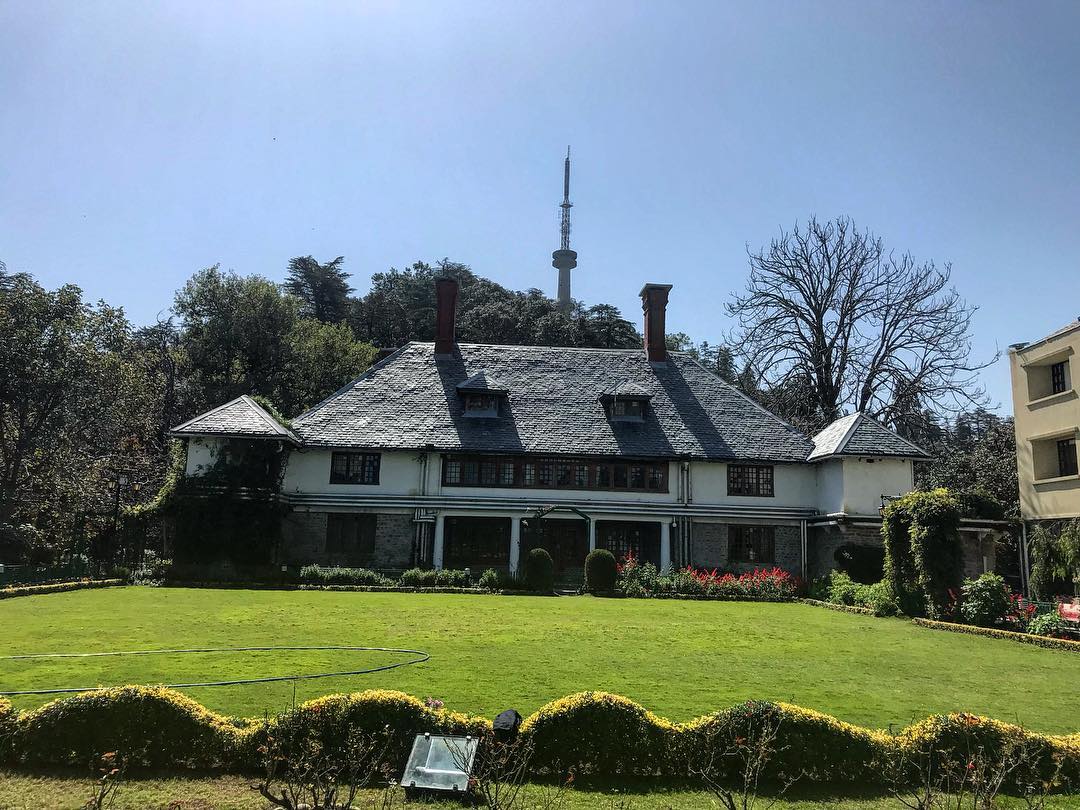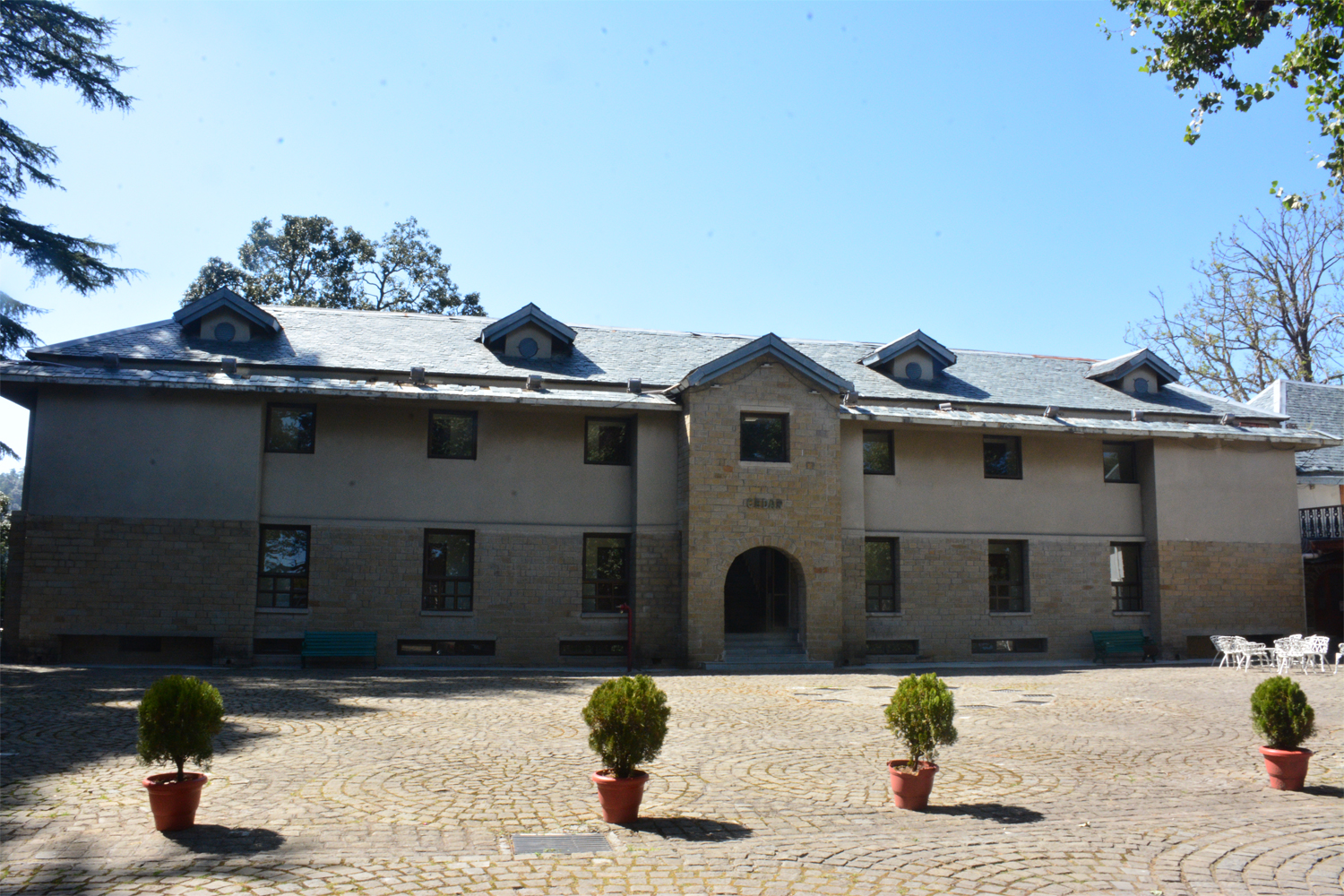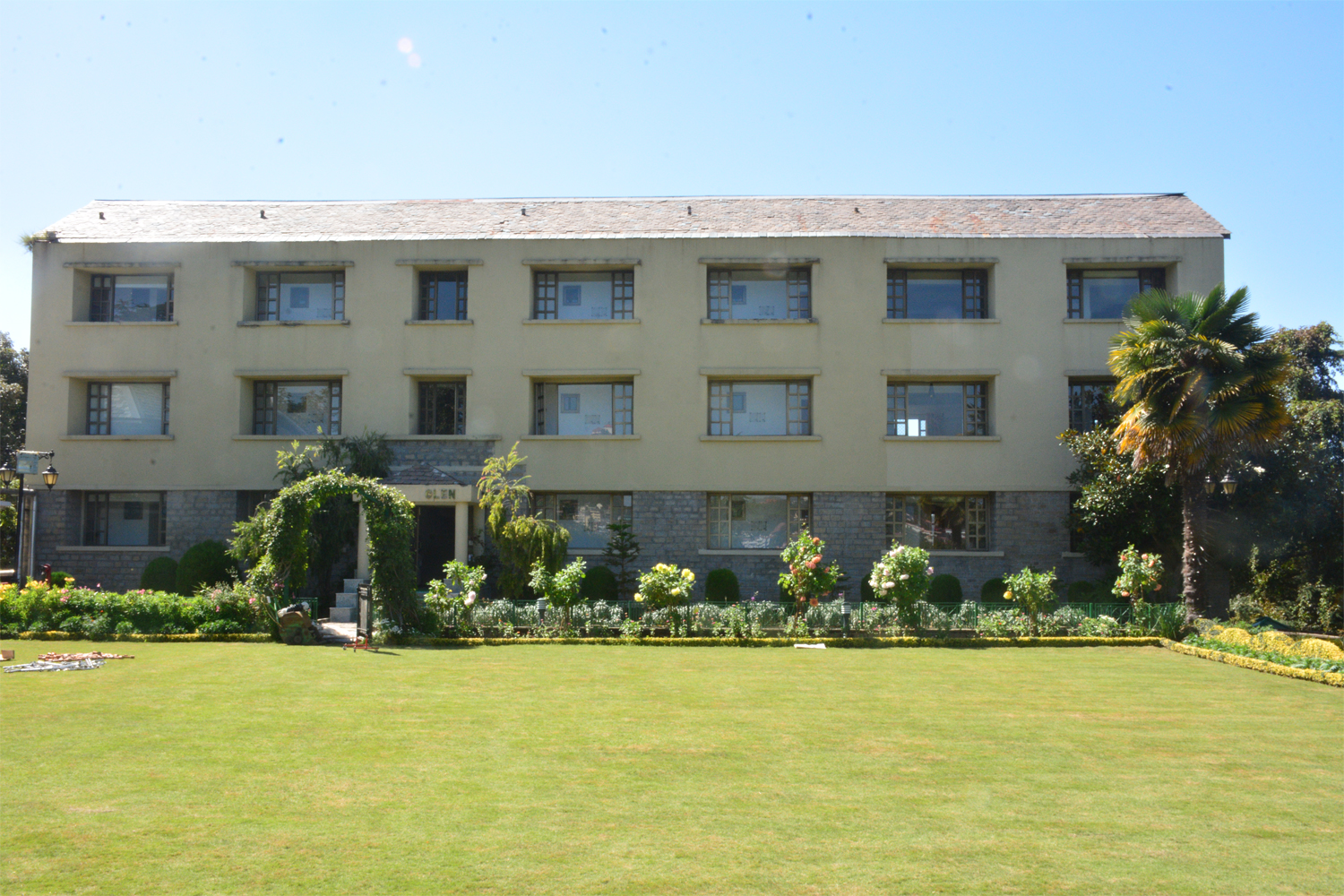
Yarrows Residential Complex
Yarrows Residential Complex

Yarrows has been the residential complex of Officer Trainees since 1950. In its present shape, the building was designed perhaps in 1913, by Sir Herbert Baker. Its Swiss Chalet Architecture adorned with beautiful lawn and scenic beauty makes the Officer Trainees feel at home right from the first instance. The wooden structure and thick walls along with centralised room heating system keep the residents warm even during the coldest winters of Shimla. Each room is well furnished with all the necessary accessories to ensure comfortable stay. Yarrows houses a regal lounge which has hosted many stalwarts and guests. The Billiards table in the adjacent room has a wonderful history of its own like the whole complex itself. The modern kitchen set-up meets the food needs of the Officer Trainees and the visiting faculties/in-service course participants staying in Cedar and Glen hostels. For the entertainment of its residents, there are facilities like TV Room, Music Room with a variety of musical instruments and percussions and a modern synthetic turf tennis court for sports lovers. For Officer Trainees it is not just a hostel complex but a home, a cocoon for their metamorphosis into gentleman and lady officers.
It’s beautiful, it’s majestic and it’s charming… and much better – it’s a home. This place just declines to change. It’s a still moment in the river of time – a droplet that has frozen amidst the Shivalik ranges of Himalayas for ages to come and admire. YARROWS, home to several generations of officers from the Indian Audit and Accounts Service, is a beautiful colonial – era building amidst the sprawling cedar trees on top of the serene snow-capped hills of Shimla.
Yarrows was designed, perhaps in 1913, by Sir Herbert Baker. Sir Baker is renowned for having designed the North and South Blocks of Delhi’s Secretariat buildings in association with Sir Edwin Lutyens and GrooteSchuur, the official residence of the President of South Africa. He noted, “A pleasant diversion from my Delhi work was building a house for Sir George Rivers Lowndes, at Shimla. A long, low hall looks through mullioned windows over the lawn and garden through majestic cedar trees to the autumn gold foothills and the Himalayan snows beyond”.
Sir Lowndes was a member of the Viceroy of India’s Executive Council. Yarrows was also home to the Finance Secretary to the Viceroy of India and for sometime the summer residence of the Jinnah family. The original Yarrows lies in Inverness, the Loch of Yarrows being somewhere close to the town of Wick. The name Yarrows is thought to come from the Norse ‘Yar-howe’ meaning ‘mound of the fish-traps’.
This building is probably named after Yarrow (Achillea millefolium), a mildly aromatic, lacy-leaved plant topped with daisy-like flower heads borne in rounded corymbs. This plant has multifarious uses: it was once used for colds and as a tonic. It was used to staunch wounds and nosebleed. It was said to cure demonic possession and also to test whether one’s love was true!
Summerwine Yarrow is a herb self-sown in the truest way meant by Wordsworth. This aromatic, lacy-leaved plant is topped with a flat head of small flowers.
In the ancient times, Yarrow was used medicinally to staunch wounds and stop bleeding. It was sacred to the god Ares, and was in particular associated with the godlike warrior Achilles, for whom the genus “Achillea” is still named. It was said to have sprung from the rust Achilles scraped from his spear to heal a centaur fallen in battle, whom Achilles himself had injured. Its association with warriors continued through the ages, so that it has been known by such names as Soldier’s Woundwort, Staunch Weed, Military Herb, Knyten or Knight’s Milfoil, Militaris, & was carried by soldiers into battle to ensure courage & magical protection from being wounded at all. Two old English verses related to this flower…
If my love do not love me, it won’t bleed a drop, If my love loves me, ’twill bleed every drop.
Apparently, Yarrow was used to test whether one’s love was true! For this purpose, a piece of yarrow was placed up the nose. If it induced a nosebleed, then one’s lover was true; if it did not induce a nosebleed, one’s lover was unfaithful!!
Yarrow, sweet Yarrow, the first I have found, In the name of Jesus Christ, I pluck it from the ground. As Jesus loved sweet Mary & took her for his dear, So in a dream this night, I hope my true love will appear.
One was supposed to pick a sprig of Yarrow and place it under a pillow, resulting in a visit, in dreams, of one’s lost lover… Lastly, a tonic of Yarrow tea if taken within a church was supposedly a great cure for demonic possession
Cedar

The training at the Academy is residential and there are three hostels name Yarrows, Cedar and Glen in the Yarrows Residential complex, to cater to the accommodation requirements of the Officer Trainees, in-service course participants and faculty members. The IA & AS Officer Trainees exclusively accommodate the Yarrows, a historical building.
Glen
The training at the Academy is residential and there are three hostels name Yarrows, Cedar and Glen in the Yarrows Residential complex, to cater to the accommodation requirements of the Officer Trainees, in-service course participants and faculty members. The IA & AS Officer Trainees exclusively accommodate the Yarrows, a historical building.

Connect with us
National Academy of Audit and Accounts
Chaura Maidan, Shimla, HP - 171004
+91-177-2808192, 271, 272
+91-177-2657994, 2658570
Disclaimer
This is official web portal of the National Academy of Audit and Accounts (NAAA). The Site is informative and provides links to other Government Departments/Offices also.
Know MoreCopyright © 2023 National Academy of Audit and Accounts, All rights reserved.






